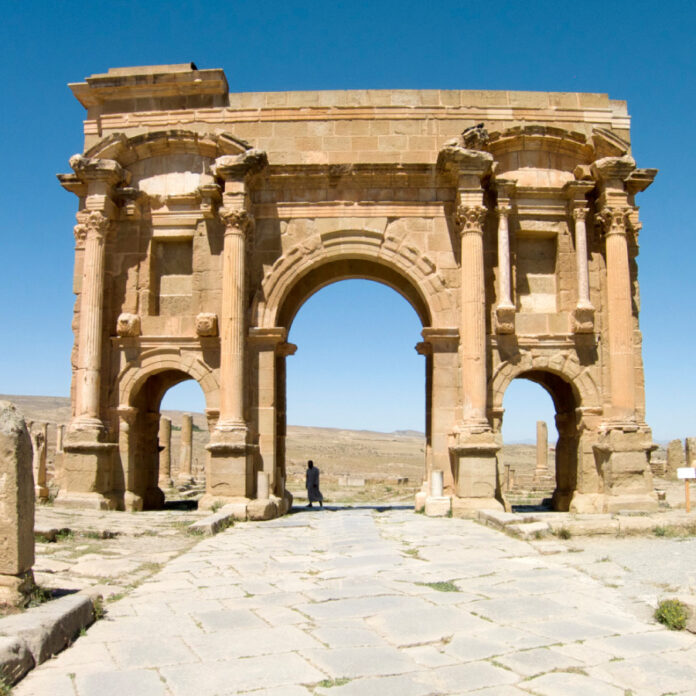Nestled on the northern slopes of the Aures Massif, the ancient city of Timgad stands as a testament to Roman urban planning and military strategy. Founded in AD 100 by Emperor Trajan, Timgad—known in antiquity as Thamugadi—represents the largest Roman settlement ever constructed in North Africa. Its ruins, still impressive today, provide a glimpse into the grandeur of Roman architectural and social engineering. This article explores the history, significance, and eventual decline of Timgad, a city that thrived under Roman rule before falling to the ravages of time and conquest.
The Foundation and Urban Design of Timgad
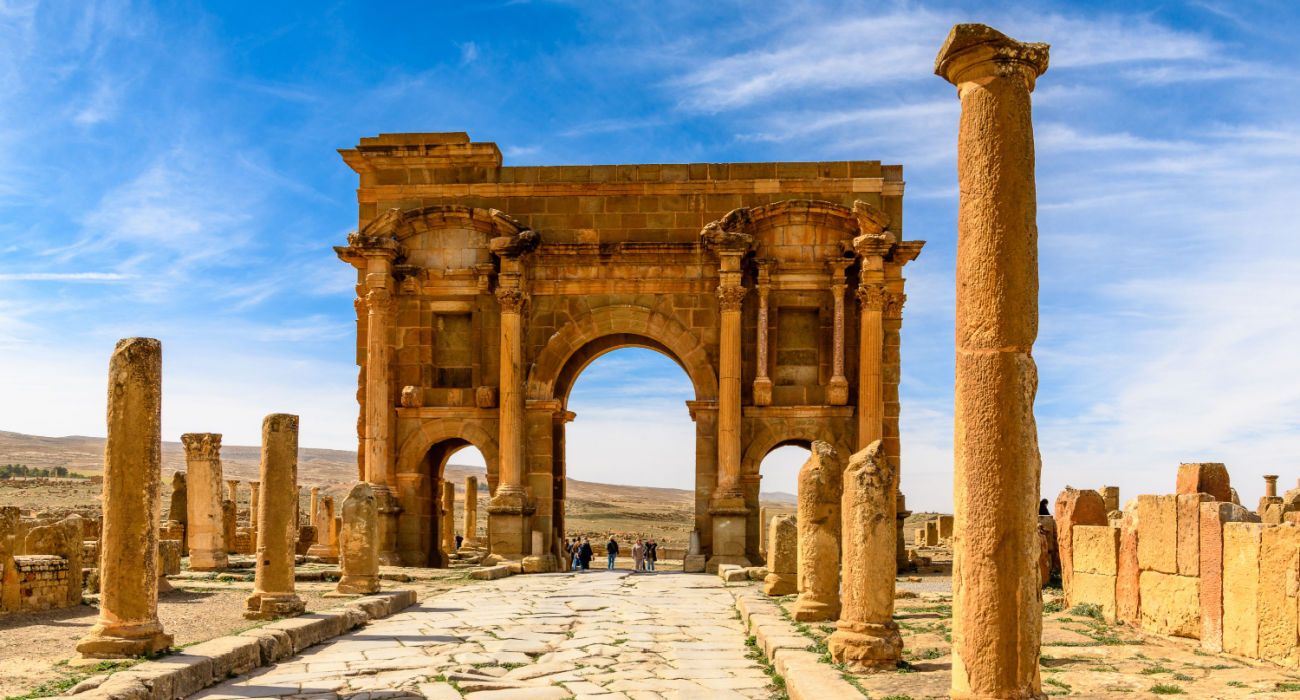
In AD 100, Emperor Trajan established Timgad strategically on the northern slopes of the Aures Massif, about 170 kilometers south of the Mediterranean coast. The city was originally laid out on a precisely planned grid, showcasing the sophisticated skills of Roman urban planners. Positioned at the crossroads of six major roads, Timgad served as a crucial military garrison designed to control one of the key passes through the Aures Mountains into the Sahara.
Initially designed to accommodate around 15,000 inhabitants, the city’s growth quickly exceeded these specifications. As Timgad expanded beyond its original grid, it evolved into a bustling urban center. The city’s layout, though initially orderly, adapted to the demands of its increasing population and the need for additional structures.
Timgad’s Role and Development
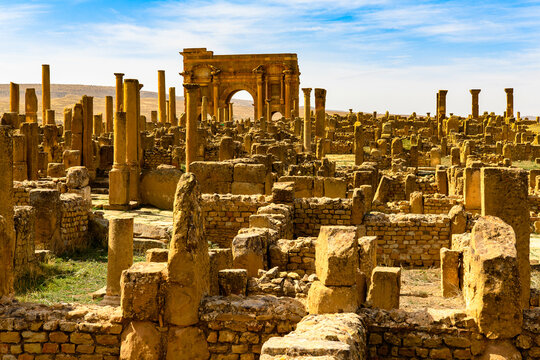
Timgad was primarily settled by Roman veterans and became a peaceful town for several centuries. By the 3rd century, the city had become a significant center of Christian activity. Despite being walled, Timgad was not fortified against invasions, reflecting its relatively tranquil existence during this period.
Roman authorities made substantial efforts to integrate the local populace into the city’s life. The Romans built numerous stone structures and established a thriving social and commercial environment. These efforts included attracting local tribes and promoting local commerce, which led many natives to join the Roman Legion in exchange for citizenship benefits.
The Pax Romana, a period of relative peace within the Roman Empire lasting around 200 years, contributed to Timgad’s prosperity. Within 50 years of its foundation, the city had become predominantly inhabited by indigenous people, indicating successful Roman assimilation and integration.
Timgad: A Thriving Roman Colony
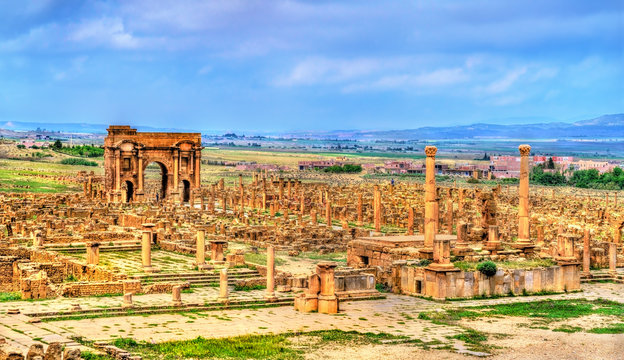
By the middle of the 2nd century, Timgad had rapidly grown into a prominent Roman colony. The city was characterized by its numerous temples, markets, baths, and the Capitolium. Many of these structures, dating from the Severan period (193-235 AD), mark the city’s Golden Age. The era saw the construction and frequent restoration of buildings such as the Trajan Arch and the city’s gates under various emperors.
The city was equipped with advanced infrastructure, including an underground reservoir that supplied water to bathhouses, pools, and fountains. Modern amenities such as a drainage and sewage system, as well as heated lavatories, underscored the sophistication of Roman engineering.
Timgad’s entertainment and cultural life were vibrant, with a theatre, library, and forum offering various activities. The city’s bathhouses and fountains were adorned with elaborate mosaics depicting pagan mythological scenes. The marketplace, known as Timgadu Bazaar, remains one of the best-preserved Roman marketplaces.
The Timgad Arch and Library
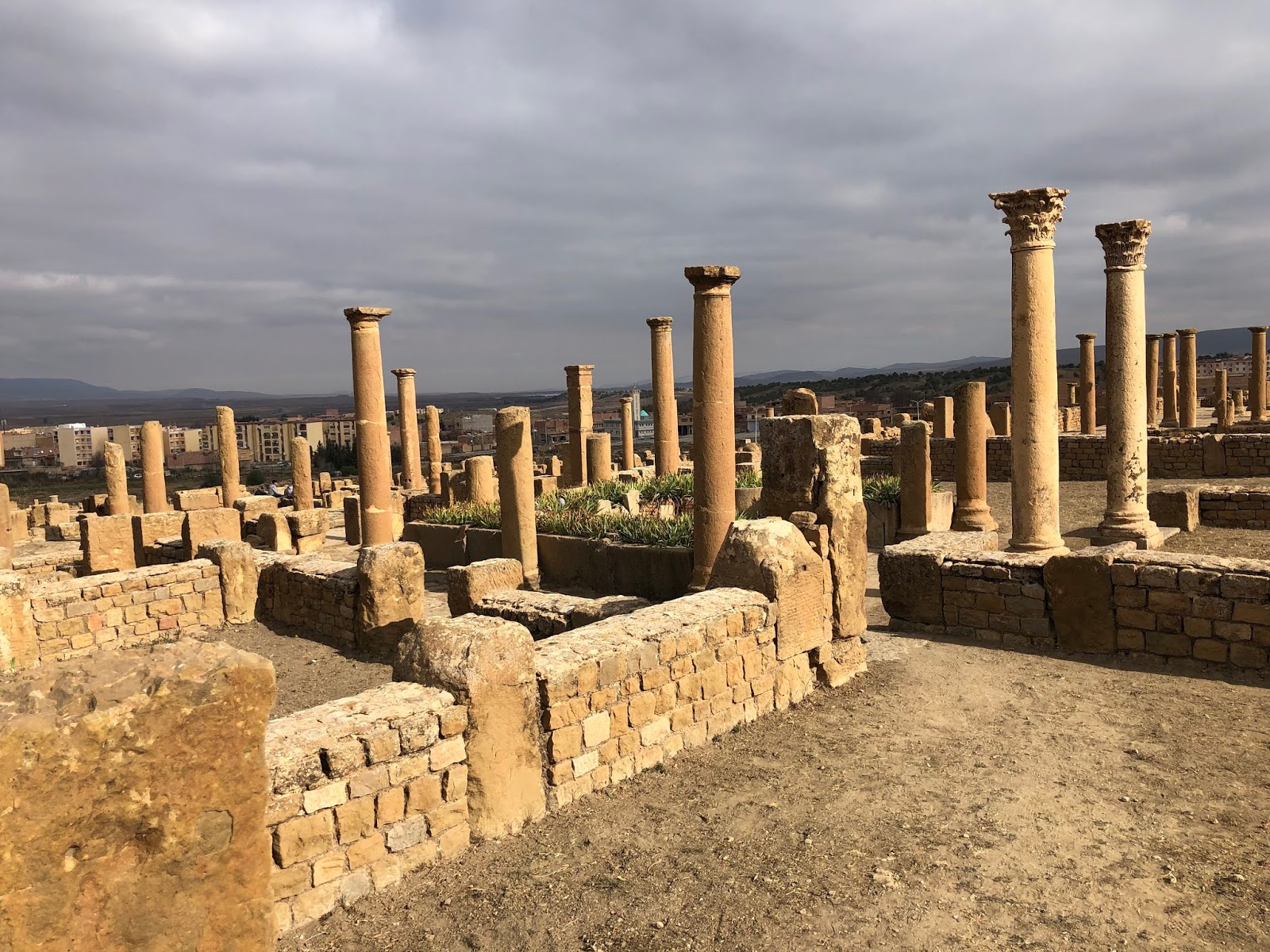
One of Timgad’s notable structures is the triumphal Arch of Trajan. Partially restored in 1900, this monumental arch features three arches and is constructed primarily of sandstone. Another significant structure was the library, a gift to the Roman people by Julius Quintianus Flavius Rogatianus. The library, a one-story building with niches for scrolls and cabinets, once boasted a collection that could hold around 3,000 scrolls. It represented the high cultural and educational standards of the time.
The city also contained a massive amphitheater, measuring 60 meters in diameter and capable of seating 4,000 spectators, further highlighting Timgad’s importance as a center of entertainment and public life.
The Decline and Fall of Timgad
Despite its prominence, Timgad’s fortunes declined with the Vandal invasion of 430 AD, which marked the beginning of its downfall. The city’s prosperity was further devastated by subsequent Arab invasions, leading to its complete destruction. By the 8th century, Timgad was abandoned and ceased to be inhabited.
Conclusion
Timgad stands as a remarkable relic of Roman urban and architectural mastery. Its grid layout, advanced infrastructure, and vibrant cultural life illustrate the city’s significance during the Roman Empire. Although its decline came with the invasions of later centuries, the ruins of Timgad continue to capture the imagination of historians and archaeologists. As the largest Roman settlement ever built in North Africa, Timgad remains a testament to the enduring legacy of Roman civilization and its impact on the ancient world.
